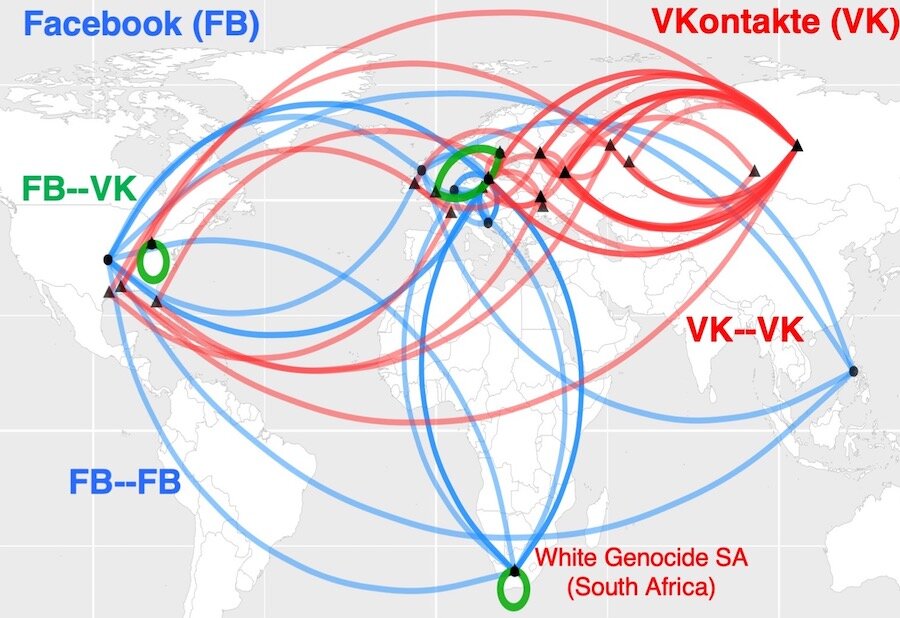First of its kind mapping model tracks how hate spreads and adapts online
From phys.org:

Online hate thrives globally through self-organized, scalable clusters that interconnect to form resilient networks spread across multiple social media platforms, countries and languages, according to new research published today in the journal Nature. Researchers at the George Washington University developed a mapping model, the first of its kind, to track how these online hate clusters thrive. They believe it could help social media platforms and law enforcement in the battle against hate online.
With the explosion of social media, individuals are able to connect with other likeminded people in a matter of a few clicks. Clusters of those with common interests form readily and easily. Recently, online hate ideologies and extremist narratives have been linked to a surge in crimes around the world. To thwart this, researchers led by Neil Johnson, a professor of physics at GW, set out to better understand how online hate evolves and if it can be stopped.
...
To understand how hate evolves online, the team began by mapping how clusters interconnect to spread their narratives and attract new recruits. Focusing on social media platforms Facebook and its central European counterpart, VKontakte, the researchers started with a given hate cluster and looked outward to find a second one that was strongly connected to the original. They discovered that hate crosses boundaries of specific internet platforms, including Instagram, Snapchat and WhatsApp; geographic location, including the United States, South Africa and parts of Europe; and languages, including English and Russian.
...
The team, which included researchers at the University of Miami, used insights from its online hate mapping to develop four intervention strategies that social media platforms could immediately implement based on situational circumstances:
- Reduce the power and number of large clusters by banning the smaller clusters that feed into them.
- Attack the Achilles' heel of online hate groups by randomly banning a small fraction of individual users in order to make the global cluster network fall a part.
- Pit large clusters against each other by helping anti-hate clusters find and engage directly with hate clusters.
- Set up intermediary clusters that engage hate groups to help bring out the differences in ideologies between them and make them begin to question their stance.
more ...
